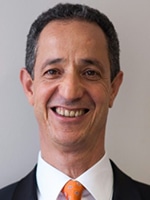Frequency Domain Bootstrap Methods for Spectral Analysis
The use of more accurate models in signal processing applications such as communications, radar, sonar, biomedical engineering, speech and image processing and machine learning has become a fundamental requirement. With an improved accuracy the models have become more complex and inferential statistical signal processing required in parameter estimation and signal detection and classification, for example, has become intractable. The signal processing practitioner requires a simple but accurate method for assessing errors of estimates and answering inferential questions. Asymptotic approximations are useful only when enough data is available, which is not always possible due to time constraints, the nature of the signal or the measurement setting. In place of the formulae and tables of parametric and non parametric procedures based on complicated mathematics and asymptotic approximations, tools such as the Bootstrap have revolutionized statistics in the last decade and have become powerful for solving complex engineering problems. It is the method of an engineer’s choice for solving inferential signal processing problems, such as signal detection, confidence limits estimation and model selection, to mention a few. In this talk, we first give a brief overview of and the basic principle underlying the bootstrap methodology. We then discuss bootstrap techniques for dependent data. Frequency domain bootstrap methods are discussed along with a combined time-domain and frequency-domain bootstrap technique for spectral analysis.

Dr. Abdelhak M Zoubir
Fellow of the IEEE and IEEE Distinguished Lecturer, Technische Universität Darmstadt, Germany on May 13, 2010 at 8:00 AM in Engineering Building II, Room 1230
Abdelhak M Zoubir is a Fellow of the IEEE and IEEE Distinguished Lecturer (2010-2011). He received his Dr.-Ing. from Ruhr-Universität Bochum, Germany in 1992. He was with Queensland University of Technology, Australia from 1992-1998 where he was Associate Professor. In 1999, he joined Curtin University of Technology, Australia as a Professor of Telecommunications and was Interim Head of the School of Electrical & Computer Engineering from 2001 until 2003. In 2003, he moved to Technische Universität Darmstadt, Germany as Professor and Head of the Signal Processing Group. His research interest lies in statistical methods for signal processing with emphasis on bootstrap techniques, robust detection and estimation and array processing applied to telecommunications, radar, sonar, car engine monitoring and biomedicine. He published over 300 journal and conference papers on these areas. Dr Zoubir has co-authored the book titled Bootstrap Techniques for Signal Processing published by Cambridge University Press in 2004 and he Guest co-edited a Special Issue on the Bootstrap and Its Applications in the IEEE Signal Processing Magazine in 2007. Dr. Zoubir co-authored the paper Detection of Sources Using Bootstrap Techniques that received the 2003 IEEE SPS Young Author Best Paper Award. Dr Zoubir continues to serve on editorial boards of various leading journals for signal processing and has been involved as General Chair, Technical Chair and Member of Technical Committees of numerous conferences and workshops. He currently is the Chair of the IEEE SPS TC on Signal Processing Theory & Methods.
The Department of Electrical and Computer Engineering hosts a regularly scheduled seminar series with preeminent and leading reseachers in the US and the world, to help promote North Carolina as a center of innovation and knowledge and to ensure safeguarding its place of leading research.
